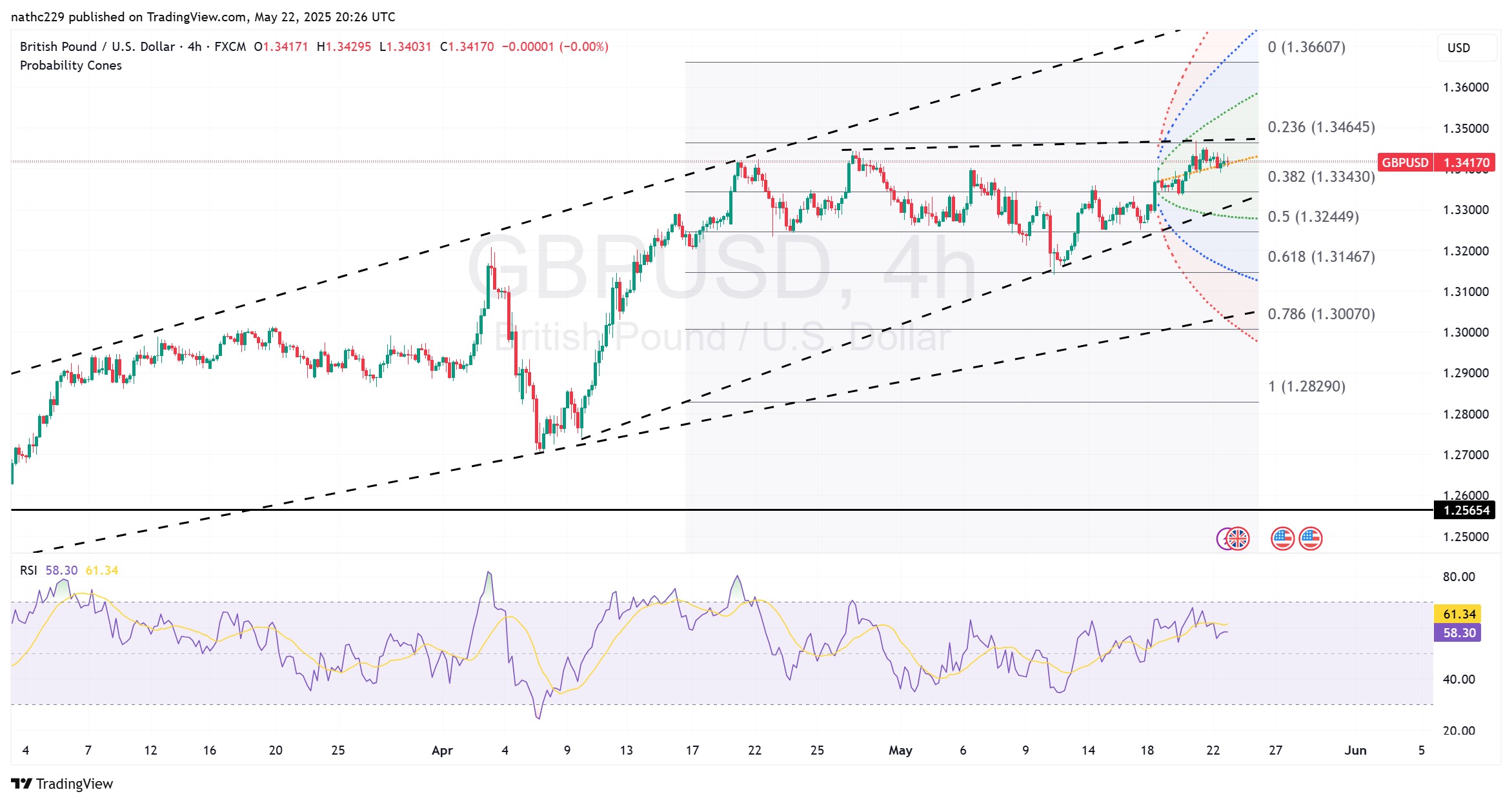Sterling stalls near 1.3450 resistance; fiscal concerns temper bullish momentum ahead of data

Technical Analysis:
GBP/USD closed little-changed near 1.3420 on Thursday, failing to sustain gains above the key resistance at 1.3450 as traders cautiously lightened bullish positions ahead of a U.S. market holiday. Although the pair briefly rose to 1.3440, it remains well below Wednesday’s new 2025 high of 1.3468, achieved following stronger-than-forecast UK inflation data. The recent uptick in gilt yields, triggered by lingering UK fiscal uncertainties and elevated inflation, continues to undermine bullish sentiment, leading traders to question the sustainability of GBP/USD at these elevated levels.
Technically, GBP/USD remains capped by immediate resistance at the 1.3440/1.3470 zone, representing Thursday’s high and the significant 2025 high respectively. Slightly above this, the upper 30-week Bollinger Band at 1.3476 acts as a crucial technical barrier, historically signaling overbought conditions. Daily RSI indicators are currently flattening near overbought territory, while MACD histograms indicate fading bullish momentum, cautioning against excessive optimism without further supportive fundamental developments. A convincing daily close above 1.3476 is necessary to rejuvenate bullish confidence, potentially extending gains toward longer-term targets near 1.3550 and the February 2022 highs above 1.3600.
Downside support for sterling remains well-defined, starting at Thursday’s low at 1.3387, followed closely by the ascending 10-day moving average currently near 1.3323. Further below, stronger support comes into focus at the May 16 low (1.3251), a level that could attract substantial buying interest if tested. Fundamentally, attention now shifts to Friday’s UK retail sales report, a critical barometer of economic health amid fiscal strain and elevated inflation. Weaker-than-anticipated consumer data could exacerbate fiscal worries, potentially prompting traders to reduce GBP/USD exposure, thereby increasing vulnerability to deeper corrective declines toward lower support zones and possibly breaking the recent bullish pattern established since mid-April.

